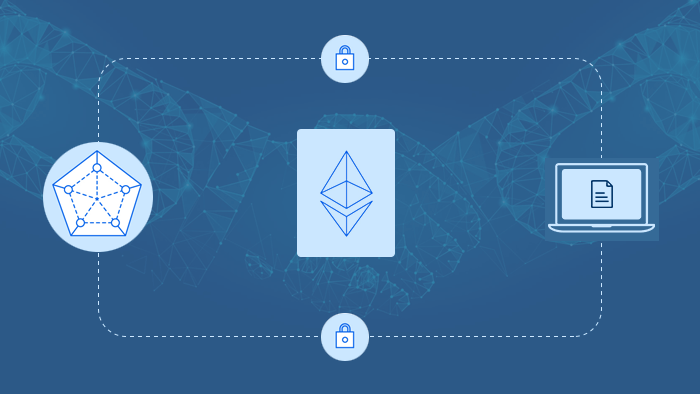Blockchain: how is its application in the programming and deployment of smart contracts

During the first years of Bitcoin was not much discussed about smart contracts; They were not well known to the community in general, although their creation actually predates Bitcoin (Nick Szabo preconceptualized them in 1997).
However, it did not take long for blockchain platforms such as Ethereum and RSK to become part of the daily discussion, providing essential resources for the development of these programs in distributed networks.
When thinking about a contract, we almost inadvertently refer to extensive documents with small letters,Bridge Smart Contract Development Services signatures everywhere and a lawyer that we do not trust very much, but is the one we have.
Smart contracts differ subtly from this concept. As computer programs , they have the ability to run automatically once configured based on the agreements reached between the parties.
They function as gatekeepers for real-world agreement compliance , executing in an irreversible and unquestionable manner. For this they depend on oracles, information entry points from outside the blockchain.
The agreed conditions for its fulfillment must be very clear among its participants and transmitted to the programmers and developers to configure the smart contract, since, in some way, the agreement must be “translated” from verbal language to computer language.
Increasingly, the professional market rewards those with knowledge of computer programming. Smart contracts, as a disruptive and innovative tool linked to the world of cryptocurrencies, are not far behind.
In this article we will explain the steps to follow for the creation and deployment of a smart contract. We will mention key data to develop contracts based on Ethereum and RSK, blockchain networks with their own characteristics, but which keep a common framework between both, such as the Solidity programming language .
I am a programmer. What tools do I have?
The most popular network for programming smart contracts is Ethereum . From there many other projects have been inspired to enable execution of smart contracts in their own domains and programming languages .
Since Solidity , the default programming language of Ethereum is inspired by other languages such as C++ , Python and JavaScript , mastering these languages is the starting point for programming smart contracts.
Solidity is a must for building decentralized applications on Ethereum . Solidity allows the execution of smart contracts in the Ethereum Virtual Machine (EVM), the computational processor of this protocol.
This language is also used by RSK, a smart contract platform that is a side chain of the Bitcoin blockchain , which allows developers to create, import and deploy smart contracts in a more standardized and simple way. In this way, RSK takes advantage of the security provided by the computing power of Bitcoin to process smart contracts.
When visiting Ethereum we will find a huge amount of resources with various functionalities. From tools to build applications to those that allow us to track them and analyze their performance.
truffle
The main tool for programming smart contracts based on the EVM is Truffle . This digital environment makes it possible to deploy contracts and configure their evolution over time, Cross chain bridge development as well as connect and interact with other contracts and protocols.
Using Truffle we can develop smart contracts and deploy them on other compatible blockchain protocols , private or public, opening up the possibility of creating a variety of decentralized applications (Dapps). In addition, it allows various contracts to be linked together and compiled effectively, making it easier to manage them together and migrate them to other work environments or networks.
That way, if we have a smart contract developed in one of the programming languages compatible with Ethereum , they can be imported into RSK. Thus, this open source framework allows you to connect an RSK node and perform tests with previously created smart contracts, such as simulating a network in which various participants and contracts interact securely.
Ganache is the simulated test network integrated into the Truffle suite, which allows you to deploy contracts on a network with the latest Ethereum updates , configure mining and issuance of blocks, and debug the network from errors and protocol inconsistencies, without risk and no additional costs.
Other tools available include VisualStudio , a console for inserting and editing code with a more intuitive and visual interface. This program allows developers to see how their lines of code relate to one another.
Among the most important features of this program is that you can edit code live, directly in an application that is running. It also includes a variety of extensions to add other programming languages, themes and third-party services.
builder
Buidler is the tool recommended by Ethereum to verify the correct operation of smart contracts, in a risk-free testing environment where plugins and additional tools are integrated.
meta mask
Among the essential requirements to interact with smart contracts is to use an appropriate wallet. One of the best known is Metamask , which, once installed as an extension in the web browser, will allow us to manipulate Ethers and ERC-20 tokens . With this wallet we can interact with smart contracts and carry out transactions of this type. It is one of the best known, Build a cross chain bridge although there are others available such as MyEtherWallet .
With these tools we can deploy previously designed smart contracts, connecting them with a public network node. This suite of tools is very versatile for both Ethereum and RSK. Let us remember that the EVM and its programming language are compatible with other platforms such as RSK or private networks such as Microsoft Azure .